Potential home buyers are aware of the resumption of falling prices, and many are wisely choosing to wait and see what fall and winter brings. Will affordability bring out the contrarians?
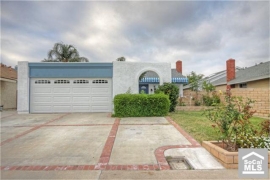
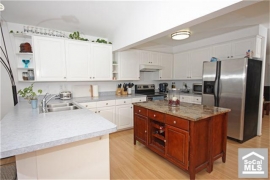
Irvine Home Address … 4591 KIMBERWICK Cir Irvine, CA 92604
Resale Home Price …… $549,000

You've got a lot of money
but you can’t afford the freeway
The road to Orange Country
leaves an awful lot of leeway
Where everyone’s a doctor
or a specialist in retail (realtor)
You got a lot of money
but you can't afford the freeway
Aimee Mann — Freeway
Up until this summer, I had not seen any evidence of kool aid intoxication wearing off. The masses were still overly eager to buy houses from fear of being priced-out or from greed to get the free HELOC money. With the economy no longer officially in recession and unemployment declining, there was a slim possibility of a spring rally picking up where the tax credits left off. Unfortunately for sellers, that isn't what happened.
Credit is still tightening because lenders have not stopped losing money or underwriting bad loans. With each tightening standard, more potential buyers are either eliminated from the buyer pool or forced to lower their bids and their expectations. However, it isn't tightening credit and inflated prices that seem to be stopping the kool aid from flowing. It looks like buyers simply stopped drinking the stuff.
Buyers have stopped buying by choice.
People realize that prices are too high, credit will continue to tighten, and if they wait, they will get a better home at a lower price. There is little other explanation for the dismal spring rally and the dramatic decline in sales volumes when sales should be rising. This slowdown has hit every sector of the housing market, but it has been particularly brutal on homes selling for over $500,000. This really shouldn't be a surprise. Buyers can't afford them.
I have heard from multiple sources, including a report from a local company that tracks sales, that the Irvine Company has experienced a dramatic decline in sales from May 15 onward. Rumor is that many outside experts and consultants have been brought in, and nobody can figure out what the problem is.
Is it product design? Is it marketing? Is it the economy? Is it financing? The truth is actually pretty simple: the prices are too high. Local wages don't support them. Attempts to elicit a herd-following response from clueless foreign cash buyers have failed. I even heard that one buyer backed out of a sale based on what they read on this blog, not that the source of truth matters much. Don't be shocked if the Irvine Company mothballs Laguna Altura like they did Orchard Hills. Further, their plan to build several thousand rentals will blunt any potential rental rate increases, keep rental parity calculations down, and further weaken housing demand.
Without the lure of mortgage equity withdrawal, buyers are reconsidering the value of home ownership. Buyers are no longer willing to stretch to absurd extremes to buy properties they can't afford, and even if buyers were willing, lenders are not ready to play along. The result is a continuing slump in sales and a full-scale buyer revolt with many choosing to sit on the sidelines.
In the long term, this is a good and necessary step for the market. When the housing bubble popped, the market needed to make a psychological adjustment to reality and abandon the fantasies of unlimited free spending money coming from their house. This psychological adjustment would correspond to a pricing adjustment as people stopped stretching.
When the market finds its new equilibrium, it will be back on a stable footing and ready to appreciate again. But this time, the appreciation will be slow and measured by the growth in local incomes. And until unemployment abates, that growth in income will be very tepid.
We aren't out of the woods yet, but when the double dip starts to wane, prices below rental parity will be common, and I will become much more bullish, albeit in a different way than the lunatics from the housing bubble.
Southland housing market warms up in June
The number of sales of new and previously owned homes in rises 11.6% from May, and the median price increases 1.8% to $285,000.
By Alejandro Lazo, Los Angeles Times — July 13, 2011
First-time buyers and investors looking for deals helped the Southland's housing market gain ground from May to June as it struggles to overcome the effects of stubborn joblessness and a large share of borrowers who owe more than their homes than they're worth.
Sales rose 11.6% last month from May, nearly twice what is typical for a June, with a total of 20,532 newly built and previously owned homes changing hands, according to San Diego research firm DataQuick. Housing has fought to recover from the expiration of popular tax credits for buyers last year, which temporarily boosted the market out of the worst downturn since the Great Depression.
That sounds really bullish. Unfortunately, May was one of the worst on record, and June was still well below historic norms. This was a statistical blip.
Although declining home prices and low mortgage rates have made homes much more affordable than during the boom years, potential buyers are still worried that buying a home is a poor short-term investment, said John J. Blank, deputy chief economist for the Los Angeles County Economic Development Corp. Many people who are in a position to buy are waiting out the market, he said.
“The stadium is filled with people watching this game, and nobody wants to play,” he said. “There are always buyers, sellers and people in the stands, and right now it is filling up with more and more spectators.”
People have good reason to wait. Prices still haven't fallen below rental parity in many locations, and with little reason to fear being priced out, many prudent buyers are waiting for prices to fall further. And prices will fall further. 
While June is typically one of the strongest months for home sales, last month's tally nevertheless represented a 14% decline from June 2010, the last month that buyers could qualify for the popular federal tax credit that had been driving sales. After that government stimulus ended, Southland sales plunged and have remained weak.
The median sales price for the region followed a similar pattern. The median, the point at which half the homes sold for more and half for less, was $285,000 last month, a 1.8% increase from May, although it was still down 5% from June 2010.
Notice the order in which data is being presented. The minor good news is followed, and downplayed, by more serious bad news. This presentation was very common at the beginning of the housing collapse.
The closely watched measure, which can vary depending on the type and location of homes that are sold, was 15.4% above the most recent bottom of $247,000, hit in April 2009 during the throes of the financial crisis. A separate measure, the Standard & Poor's Case-Shiller index, also showed that home prices in Los Angeles and Orange counties remain above their recession-era lows.
“The housing market remains dysfunctional and lopsided, just somewhat less so than it was a few months or a year ago,” DataQuick President John Walsh said. “The market mix indicates that a lot of potential buyers are either stuck, for lack of equity, or spooked and are waiting things out.“
John Walsh embraces his perceived role as market cheerleader. How does the market look less dysfunctional that it did a year ago? Everyone was cheering the rally a year ago. It wasn't until the tax credits expired and prices resumed their downward momentum that market cheerleaders suspected anything was wrong.
Typically a rising housing market helps propel the economy out of a recession. But this time, the high unemployment rate and large numbers of borrowers “underwater,” or owing more on their homes than what they could get for selling them, is holding back the market.
Los Angeles County led the state in job losses in May, shedding a net 11,400 jobs, while the county's unemployment rate stood at 11.9% in May, the most recent numbers released. And 23.8% of all properties in the L.A. metro area with a mortgage, or 365,128, were in negative equity at the end of the first quarter, according to Santa Ana research firm CoreLogic.
Sales of so-called distressed properties — those whose owners are in some state of default — made up more than half of the Southland resales last month, DataQuick said. Roughly 1 in 3 homes resold was a foreclosure, while almost 1 in 5 was a short sale, in which the mortgage holder accepts a sale price that is less than the outstanding debt on the property.
Sales of foreclosed homes — properties foreclosed on in the previous 12 months — accounted for 33% of resales last month, down from 33.2% in May, but up from 32.8% in June 2010.
Notice how well the lenders are managing their inventory. Despite the fact they have an enormous shadow inventory, they foreclose on and resell nearly 33% of resales every month, and they rarely deviate from that percentage even by a fraction of a percent.
The number of foreclosure filings has dropped in recent months in the region and statewide, as well as nationally. Analysts attribute the declines to major banks slowing down the process as they try to negotiate a settlement with state and federal regulators over foreclosure practices.
Analysts who believe any slowdown in foreclosures is related to any news event are wrong. Lenders are managing the percentage of sales of foreclosed home. They know if they push through any more than a third of the total sales, prices drop. They are trying to liquidate while protecting the value of their assets.
Short sales in June , made up an estimated 17.7% of the market last month, the same as in May but down from 20.5% in June 2010.
Kathryn Davis, a real estate agent in Corona, said that short sales were becoming more streamlined, and many homeowners, now facing long stretches of unemployment, were becoming increasingly willing to cut their losses and submit themselves to such sales.
Another realtor who doesn't know what's going on. There is nothing streamlined about the short sale process. Short sales are extended negotiations between the second lien holder and the seller. The second mortgage holder has nothing of value, but they have learned to play chicken with borrowers to try to get them to sign side agreements to pay at least part of the debt.
Borrowers are not becoming more amiable to short sales because they are unemployed. Borrowers are trying short sales because it is the only way to sell their homes. Many others simply walk away. At least those who short sell have some limited control over when they leave their houses. Those that drag out the process can get free housing for quite a while.
“They don't qualify for a modification — and a modification is a joke anyway,” she said.
She is right about modifications being a joke.
“The homeowners who are short-selling are becoming a little easier to work with, whereas before they were so bitter it was tough to get the bank-required documents in time from them. Now that we are almost three or four years into it, people are aware, so it's not like pulling teeth.”

New home sales continue to struggle, with only 1,395 transactions throughout the region last month, a 36% drop from June 2010 and the lowest new-home total for a June since DataQuick began tracking sales in 1988.
See comments on the Irvine Company above.
Michael Novak-Smith, a real estate agent specializing in selling foreclosed homes in the Inland Empire, said that prices were also being dragged down by a lack of buyers as well as tougher financing criteria. These days a home has to be in good shape in order for a bank to make a loan, and many credit-worthy buyers can't get financing.
realtors are now experts on who is creditworthy? If people can't get financing, then by definition, they are not creditworthy. Anyone who was breathing was considered creditworthy five years ago, and now people need real income and proven ability to make payments.
“It is very difficult to get a loan,” he said. “There is no end in sight to how bad it is and how long it is going to take to get out of this. It seems like it could be years.”
There is end in sight. The market will drag along the bottom for another three years. The lowest tier of the market will strengthen first, then the chain of move ups will finally give strength to the upper tier last. The window of opportunity for affordability is starting to open now in Orange County, and it will remain open for the next three to five years.
Single family detached below rental parity in Irvine
We have seen many undesirable condos trading at or below rental parity, but finding single family detached homes at those price levels has been elusive. As one might expect, these prices levels will be seen first in the least desirable neighborhoods with low HOA or Mello Roos. Today's featured property is in El Camino Real which has no HOA or Mello Roos.


In my opinion, the front elevation on this house is remarkably ugly. However, the inside is well done (although that center island is completely out of place). What jumped out at me about this property was the low cost of ownership. For a buyer putting 20$% down and avoiding private mortgage insurance, this property only costs $2,200 per month to own. There aren't many four-bedroom homes in Irvine renting for $2,200 or less, and none with a nice interior like this one.
Someone will buy this property even knowing prices are likely to go down because owning this one is less expensive than a comparable rental, particularly if they know they are going to stay put for five years or more.
Renting should cost a premium over ownership. Renters have freedom to move and no maintenance responsibility. Only kool aid intoxication makes people pay a premium to own. Once the premium for renting gets high, many will opt to purchase to save money even in a declining market. Such is the power of rental parity. Contrarians who buy because it's cheaper to own than to rent will buy and cause prices to bottom.
The owner's of this property bought it back in the 1980s. I estimated their purchase price from their tax bill, but it may be a bit less than I show. They have doubled their mortgage to $417,000, but they didn't go so overboard as to make this a short sale.
——————————————————————————————————————————————-
This property is available for sale via the MLS.
Please contact Shevy Akason, #01836707
949.769.1599
sales@idealhomebrokers.com


Irvine House Address … 4591 KIMBERWICK Cir Irvine, CA 92604
Resale House Price …… $549,000
Beds: 4
Baths: 2
Sq. Ft.: 1623
$338/SF
Property Type: Residential, Single Family
Style: One Level, Bungalow
Year Built: 1972
Community: El Camino Real
County: Orange
MLS#: S666246
Source: SoCalMLS
Status: Active
On Redfin: 2 days
——————————————————————————
Irvine living with no HOA and no Mello-Roos? Here it is. Beautiful single story home within walking distance to schools on quiet cul-de-sac. Lovely 3 or 4 bedroom tastefully enlarged from original to 1605 sq ft with permits. Huge open kitchen/family room area, living room with fireplace, 4th bedroom converted to office. Relaxing rear yard and front patio. Large decorative and retractable awning over the front patio. Large lot. Close to shopping, Freeways, Airport.
——————————————————————————————————————————————-
Proprietary IHB commentary and analysis ![]()
Resale Home Price …… $549,000
House Purchase Price … $200,000
House Purchase Date …. 10/20/1986
Net Gain (Loss) ………. $316,060
Percent Change ………. 158.0%
Annual Appreciation … 4.1%
Cost of Home Ownership
————————————————-
$549,000 ………. Asking Price
$109,800 ………. 20% Down Conventional
4.48% …………… Mortgage Interest Rate
$439,200 ………. 30-Year Mortgage
$95,149 ………. Income Requirement
$2,220 ………. Monthly Mortgage Payment
$476 ………. Property Tax (@1.04%)
$0 ………. Special Taxes and Levies (Mello Roos)
$114 ………. Homeowners Insurance (@ 0.25%)
$0 ………. Private Mortgage Insurance
$0 ………. Homeowners Association Fees
============================================
$2,810 ………. Monthly Cash Outlays
-$370 ………. Tax Savings (% of Interest and Property Tax)
-$580 ………. Equity Hidden in Payment (Amortization)
$182 ………. Lost Income to Down Payment (net of taxes)
$157 ………. Maintenance and Replacement Reserves
============================================
$2,199 ………. Monthly Cost of Ownership
Cash Acquisition Demands
——————————————————————————
$5,490 ………. Furnishing and Move In @1%
$5,490 ………. Closing Costs @1%
$4,392 ………… Interest Points @1% of Loan
$109,800 ………. Down Payment
============================================
$125,172 ………. Total Cash Costs
$33,700 ………… Emergency Cash Reserves
============================================
$158,872 ………. Total Savings Needed
——————————————————————————————————————————————————-
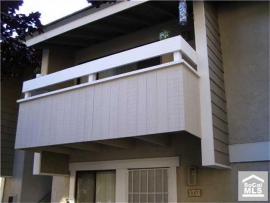











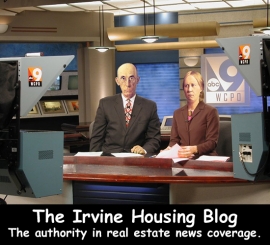















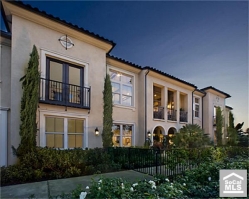









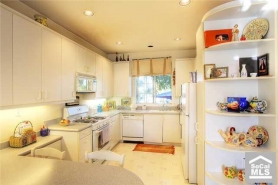







 IHB: Distressed sales reset market pricing. Delusional sellers with WTF asking prices don't count. Further, if sales were robust and demand were strong, distressed properties would not need to be discounted in order to sell. In a weak demand market, all sales will be below recent comps. Lowering price is the only way to generate sufficient buyer interest to sell property.
IHB: Distressed sales reset market pricing. Delusional sellers with WTF asking prices don't count. Further, if sales were robust and demand were strong, distressed properties would not need to be discounted in order to sell. In a weak demand market, all sales will be below recent comps. Lowering price is the only way to generate sufficient buyer interest to sell property.





